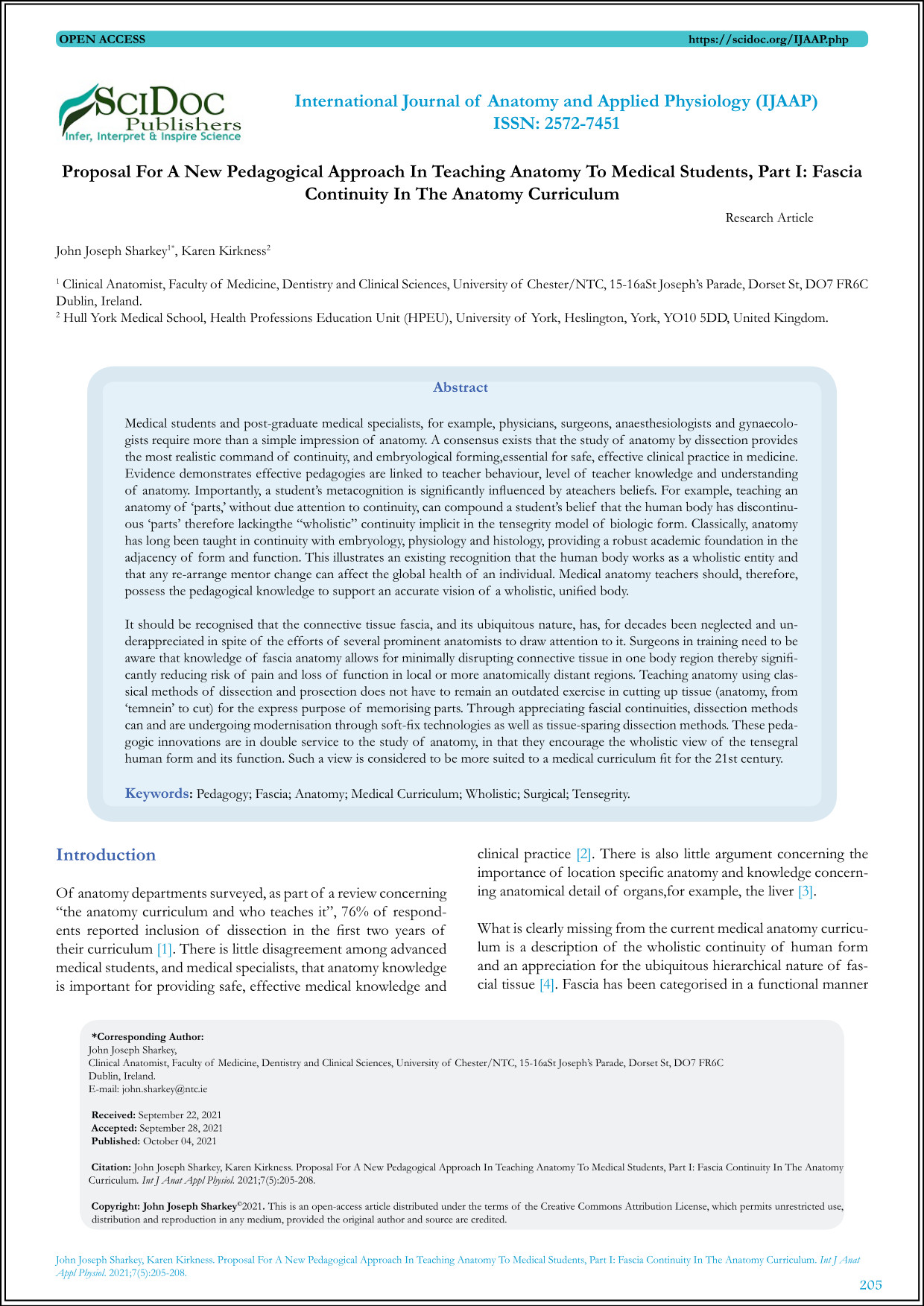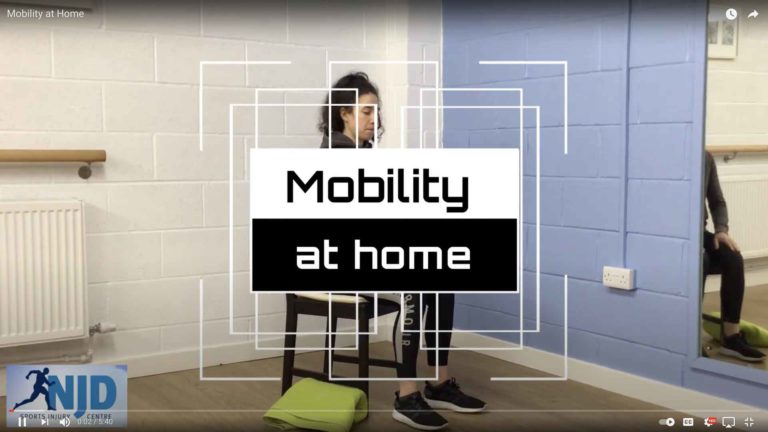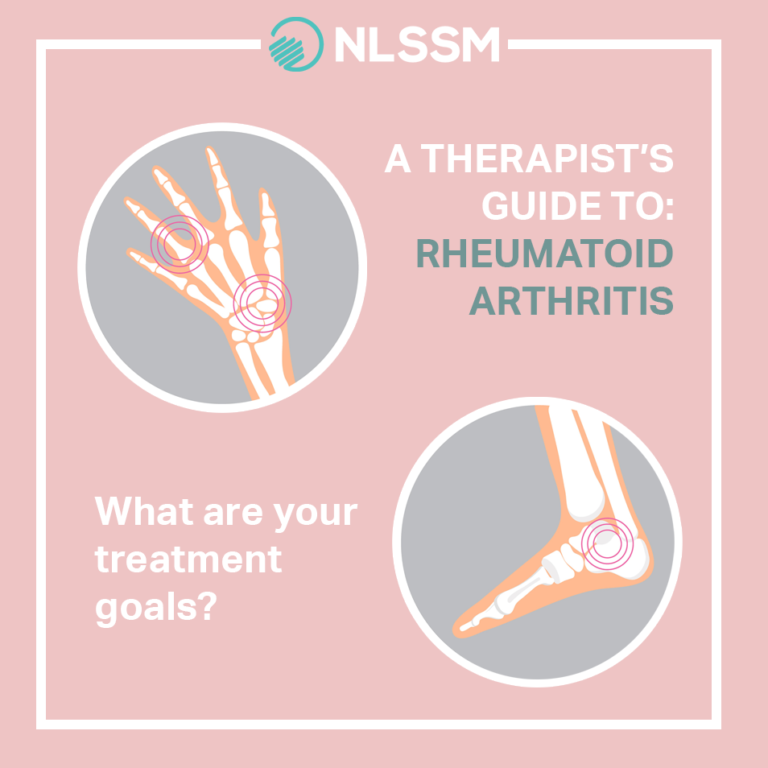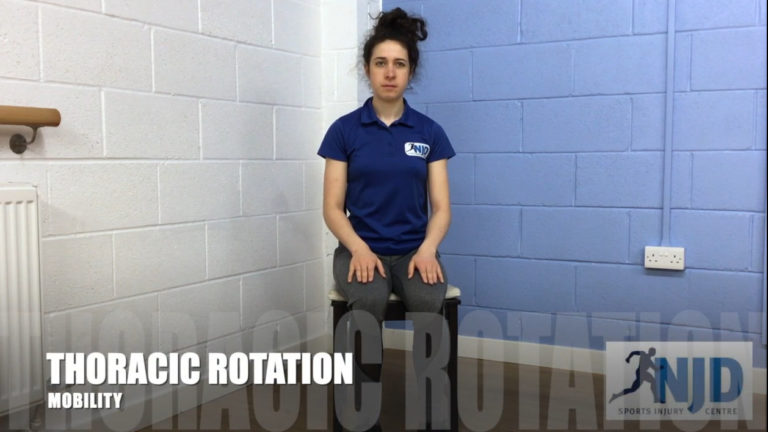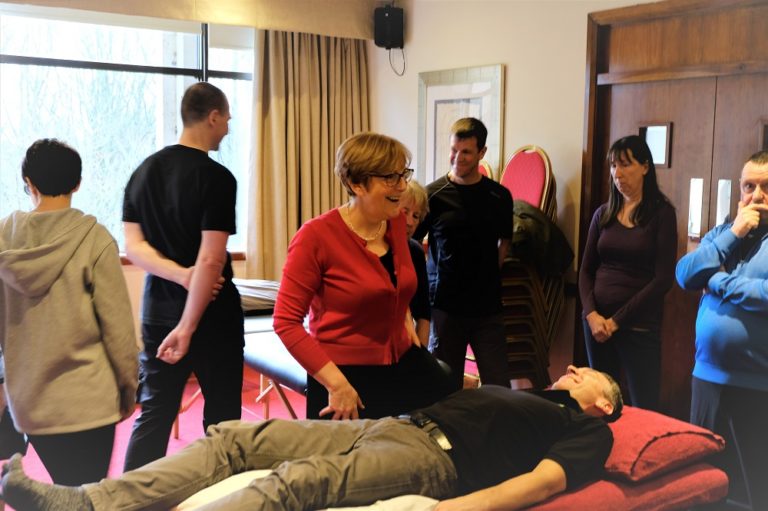Abstract
Medical students and post-graduate medical specialists, for example, physicians, surgeons, anaesthesiologists and gynaecologists require more than a simple impression of anatomy. A consensus exists that the study of anatomy by dissection provides the most realistic command of continuity, and embryological forming, essential for safe, effective clinical practice in medicine. Evidence demonstrates effective pedagogies are linked to teacher behaviour, level of teacher knowledge and understanding of anatomy. Importantly, a student’s metacognition is significantly influenced by a teachers beliefs. For example, teaching an anatomy of ‘parts,’ without due attention to continuity, can compound a student’s belief that the human body has discontinuous ‘parts’ therefore lacking the “wholistic” continuity implicit in the tensegrity model of biologic form. Classically, anatomy has long been taught in continuity with embryology, physiology and histology, providing a robust academic foundation in the adjacency of form and function. This illustrates an existing recognition that the human body works as a wholistic entity and that any re-arrange mentor change can affect the global health of an individual. Medical anatomy teachers should, therefore, possess the pedagogical knowledge to support an accurate vision of a wholistic, unified body.
It should be recognised that the connective tissue fascia, and its ubiquitous nature, has, for decades been neglected and underappreciated in spite of the efforts of several prominent anatomists to draw attention to it. Surgeons in training need to be aware that knowledge of fascia anatomy allows for minimally disrupting connective tissue in one body region thereby significantly reducing risk of pain and loss of function in local or more anatomically distant regions. Teaching anatomy using classical methods of dissection and prosection does not have to remain an outdated exercise in cutting up tissue (anatomy, from ‘temnein’ to cut) for the express purpose of memorising parts. Through appreciating fascial continuities, dissection methods can and are undergoing modernisation through soft-fix technologies as well as tissue-sparing dissection methods. These pedagogic innovations are in double service to the study of anatomy, in that they encourage the wholistic view of the tensegral human form and its function. Such a view is considered to be more suited to a medical curriculum fit for the 21st century.
Not joined up yet?
There’s plenty of reasons to join the LCSP Register
Insurance Partners
Our dedicated team can tailor individual policies to suit your specific needs
Workshops
Keep your skills up to date with CPD Workshops and courses
Business Support
Advice tailored to working in the private sector
Find a Therapist
Our directory of therapists searchable by the general public
Welfare Officer
Supporting members who may have situations of difficulty where they need assistance, guidance or reassurance.
